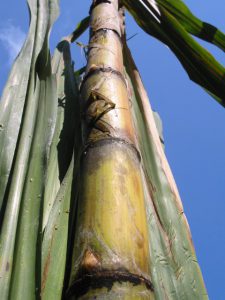Biomass production with a sustainability certificate
Over the past ten years criteria for sustainability have been drawn up on the national and international level. But how these criteria are going to be measured and monitored is the main question Floor van der Hilst and her colleagues will be studying in the coming years. The first case study focuses on Brazil’s feedstock production for fuel, feed, fibre and chemicals.
“What you see happening now is that many companies are starting up feedstock production but lack good information to help them determine whether their activities are sustainable and profitable. So two years later they discover that things are not working as expected. A waste of time and money,” says Dr. Floor van der Hilst of the Copernicus Institute for Sustainable Development and Innovation in Utrecht. “That can be avoided by carrying out a good assessment beforehand. This is also important for governments, for the implementation of policies and land use planning and for certification mechanisms to verify the level of sustainability.” Together with four PhD students and the research institute LEI, Van der Hilst is going to focus on the sustainability of feedstock production and utilisation. “To run a bio-based economy an enormous amount of biomass is needed. These feedstocks must be produced somewhere. How much land is potentially available? How can we monitor the process and ensure that it will happen in a sustainable way? That are the main objectives of our project,” she explains.

Sustainable criteria with regional aspects
What qualifies as sustainable has been a point of discussion. To solve this, different sets of sustainability criteria have been formulated on national and international levels. One of the major criteria is greenhouse gas emissions. “Other factors are competition with other land uses, impact on water, soil and biodiversity and social-economic aspects, to include the impact on the local population,” says Van der Hilst. “Therefore we are going to take a perspective that is spatial, in time and regional. That means that we look where land is available for biomass production and if that will be the case in the future. That depends on specific regional conditions which may change over time.”
In Mozambique, for example, there is an increase in the population and an increase in the consumption per head of the population. So the total food demand is increasing and, consequently, so is land use for food production. On the other hand, production is so inefficient that they can make considerable gains by taking some steps forward in terms of technology. “One possible outcome is that there is more land available for biomass production. In the Ukraine the population is decreasing and the land is now mainly used for agriculture. There a totally different dynamic is going on,” Van der Hilst explains. “The next thing to look at is the impact on the environment and if it is possible to make it profitable.”
First case study Brazil
In order to create a uniformly applicable certification method that incorporates regional and spatial aspects, Van der Hilst is going to study different areas in more detail. The first area is in Brazil with which BE-Basic has a collaborative framework for joint projects. Floor and her colleagues will carry out their study in collaboration with the Bio-ethanol Science and Technology Centre (CTBE). “Brazil is a key player in bio-ethanol production from sugar cane and still expanding, which makes it an ideal region to start with. We are now working hard on contacting partners to collect information about the land use change dynamics.” From both sides there is much enthusiasm for collaboration, she noticed. “We need information and for them it is interesting to let foreigners take a look behind the scenes. You can say yourself that your bio-ethanol is sustainable, but it is more credible when others say that for you.”
Other regions on her list are Eastern Europe, Africa, South America, and Asia in general. Collaboration is ongoing with all these regions. “It is important to collect different case studies so as to end up with a standardised assessment procedure for evaluating sustainability, which can be used everywhere,” Van der Hilst says. “It will also be possible to make an analysis beforehand to decide which is the best region for biomass production. In that way you can even identify go or no-go areas.”
Started
January 2010

